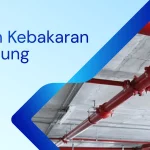What are the Building Hydrant Installation Standards?
Installation hydrant building is one of the crucial aspects in a building's fire protection system. This system not only functions as a fire extinguishing aid, but also as the main defense in controlling large-scale fires before the fire brigade arrives.
Therefore, the installation of building hydrants must be carried out by paying attention to applicable technical standards so that they function optimally when needed. This installation process includes various important elements, starting from technical planning, material selection, to integration between components such as hydrant pumps, distribution pipes, hydrant pillars, hydrant boxes, and control panels.
Mistakes in planning or implementing the installation can cause the system to fail when an emergency occurs. Therefore, understanding installation standards is very important, both in terms of security and operational effectiveness of the system.
Why Must Building Hydrant Installations Meet Standards?
Building hydrant installations that do not meet standards can result in the failure of the fire protection system in emergency situations.
Given that the hydrant system consists of complex and interconnected components, a small error in installation can cause a fire consequence large. For example, inadequate water pressure or incorrect pipe distribution can prevent water from reaching the fire quickly and effectively.
In addition, mismatched installation can also make a large investment in this protection system in vain. Therefore, the installation must be carried out by experienced experts and follow official guidelines such as the Indonesian National Standard (SNI) and international standards such as NFPA.
Building Fire Hydrant Installation Standards
In order for the hydrant system to function optimally, there are two main references that must be adhered to, namely the international standard NFPA and the local standard SNI. Both complement each other and are mandatory references in the process of installing a building fire protection system.
NFPA Standards
The National Fire Protection Association (NFPA) is an international organization that sets various fire safety standards, including for hydrant systems. Some NFPA standards that are relevant to building hydrant installations include:
- NFPA 14Manage the installation of standpipe and hose systems, including dimensions, pressure capacity, and placement.
- Specific standards for centrifugal fire pump installations, including pump performance and automatic control.: Standar khusus untuk instalasi pompa kebakaran sentrifugal, termasuk performa pompa dan kontrol otomatisnya.
- NFPA 10Arrange portable fire extinguishers as a complement to the hydrant system.
- NFPA 13Standard for automatic sprinkler systems, often combined with hydrant systems.
NFPA also prescribes conspicuous colors for hydrants such as red and yellow to be easily recognized in an emergency.
SNI Standard
In Indonesia, building hydrant installations are required to follow the Indonesian National Standard (SNI) issued by the National Standardization Agency (BSN). Some important standards that must be considered are:
- SNI 03-1735-2000Explaining the procedures for planning building and environmental access for firefighting purposes. One of them is the availability of water of at least 2400 liters/minute with a pressure of 3.5 bar for 45 minutes.
- SNI 03-1745-2000Arrange the technical installation of standpipe and hose systems, including placement positions, working pressure, and system testing.
- SNI 03-3989-2000Standard automatic sprinkler installation for additional protection against fire hazards.
Interestingly, SNI standards adopt many international standards such as NFPA and Fire Precautions in Buildings from Singapore, thus ensuring that the systems built are in accordance with global best practices.
Building hydrant installation is not just about installing pipes and hydrant boxes, but rather a complex process that must follow strict technical standards and regulations to ensure the safety of occupants and the protection of building assets.
By complying with NFPA and SNI standards, the hydrant system will be able to work optimally when a fire occurs.
Adiwarna is present as an experienced and trusted fire protection contractor in handling building hydrant installations in accordance with national and international standards. With the support of a professional team and a commitment to quality, Adiwarna is ready to provide the best solution for protecting buildings from the risk of fire.




